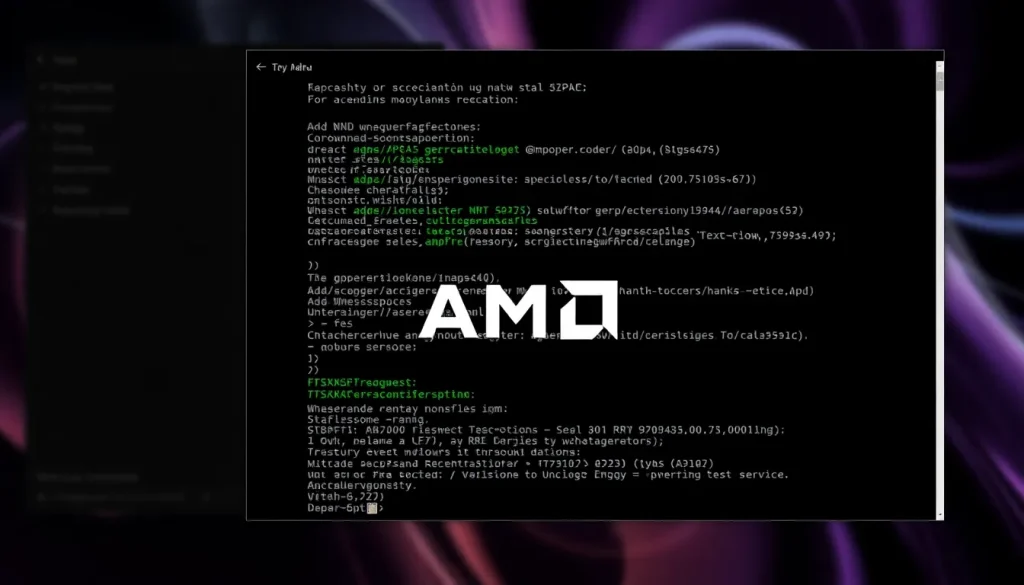AMD accidentally releases FSR 4 source code for RX 7000, RX 6000 and NVIDIA GPUs

In the ever-evolving world of gaming technology, advancements in graphics performance are crucial for enhancing player experience. As games become increasingly demanding, the need for effective scaling technologies like AMD's FidelityFX Super Resolution (FSR) becomes paramount. Recently, AMD inadvertently released source code files for FSR 4, allowing broader compatibility with various GPUs, including older models. This development opens new doors for gamers seeking improved performance and visual fidelity.
Understanding the significance of FSR and its evolution is essential for anyone invested in gaming. This article will delve into the implications of AMD's latest release, the technical details surrounding FSR 4, and how it affects different generations of graphics cards.
AMD releases INT8 files for FSR 4, enabling compatibility with RX 7000 and RX 6000 series
The advent of artificial intelligence in graphics rendering has dramatically changed how games are visualized. AMD's latest FSR 4 is a leap forward in this technology, providing gamers with higher image quality and better performance. Previously, FSR was limited to the RX 9000 series, but AMD's recent publication of the source code allows users to compile the software for RX 7000 and RX 6000 series GPUs, as well as NVIDIA's RTX 30 series.
Compiling these files has become a grassroots effort, with the community stepping in to ensure that older graphics cards can take advantage of this new scaling technology. The release included INT8 files, which are crucial for integrating FSR 4 into different GPU architectures. Users can now enjoy enhanced gaming experiences without the need to upgrade their hardware.
Key points regarding this release include:
- FSR 4 significantly enhances image quality, approaching native resolution in many cases.
- The community has successfully compiled the necessary files to enable FSR 4 on older GPUs.
- Compatibility extends beyond AMD's latest generation to NVIDIA's RTX 30 series.
- The support for older GPUs demonstrates AMD's commitment to inclusivity in gaming technology.
Improvements in image quality and performance trade-offs
While the upgrade to FSR 4 brings promising enhancements, it is essential to recognize the trade-offs involved. Reports indicate that users may experience a performance drop of approximately 15-20% compared to FSR 3.1. This reduction in frame rates can be concerning, especially in fast-paced games where every FPS matters.
For example, in a recent test using a RX 7900 XT in Cyberpunk 2077, users noted a drop from 130 FPS with FSR 3.1 to around 110 FPS with FSR 4. However, the visual improvements were substantial, with reduced shimmering and aliasing artifacts that can detract from the gaming experience.
When comparing FSR 4 to its predecessor, several improvements stand out:
- Enhanced clarity and detail in textures, providing a more immersive experience.
- Reduction in visual artifacts like shimmering, which can distract players.
- Overall smoother gameplay, despite the decrease in raw FPS.
Community-driven support and tutorials for FSR 4
The community's response to AMD's release has been overwhelmingly positive, with numerous forums and tutorials popping up to aid users in implementing FSR 4. Gamers are eager to experiment with this technology, and resources are readily available to facilitate the process.
For those interested in trying out FSR 4, various platforms like Reddit have become hubs for sharing experiences and troubleshooting tips. Users can find guides that walk them through the steps of compiling the necessary files and installing FSR 4 in their games.
Notable community contributions include:
- Compilation guides for setting up FSR 4 on different GPUs.
- Tutorials demonstrating how to integrate FSR 4 into popular games like Cyberpunk 2077 and Black Myth: Wukong.
- Performance comparisons and benchmarks shared by users showcasing the benefits of FSR 4.
One particularly useful tutorial by Ancient Gameplays illustrates two methods for utilizing FSR 4: directly within games as if it were officially integrated or through the use of tools like OptiScaler for enhanced compatibility. This flexibility empowers gamers to achieve the best possible results with their existing hardware.
Performance expectations on older GPUs: RX 6000 and RTX 30 series
While the RX 7000 series can fully leverage FSR 4's capabilities, users of older GPUs, such as the RX 6000 series and NVIDIA's RTX 30 series, can still benefit but may encounter certain limitations. The performance and quality might not match what is achievable on newer architectures, but significant improvements can still be observed.
In particular, users may notice the following while using FSR 4 on older GPUs:
- Visual quality improvements, though possibly with some degradation compared to RX 7000 performance.
- Increased likelihood of performance drops, particularly with demanding titles.
- Potential for varying results based on specific game optimization and engine compatibility.
Ultimately, the community's ability to adapt and implement FSR 4 on a broader range of hardware illustrates the flexibility and power of modern gaming technology. As players continue to explore these options, the future of gaming looks brighter than ever.
For those eager to dive deeper into the capabilities of FSR 4, check out this video which provides a comprehensive overview of its implementation on various graphics cards:




Leave a Reply